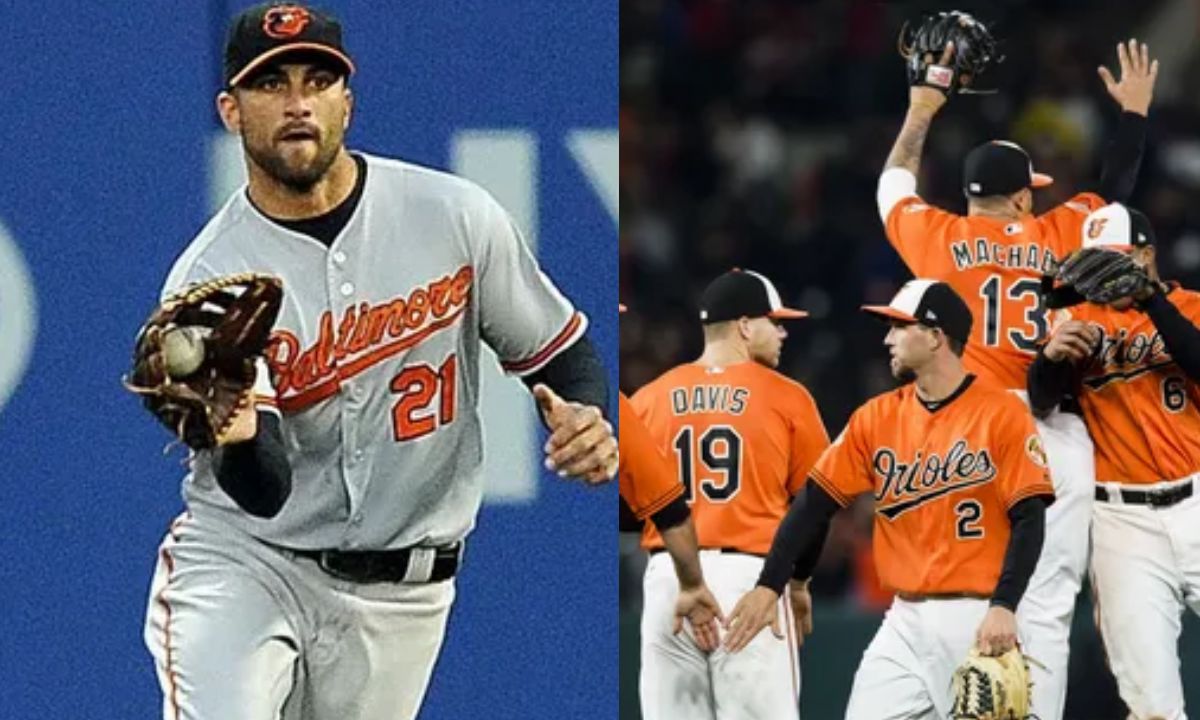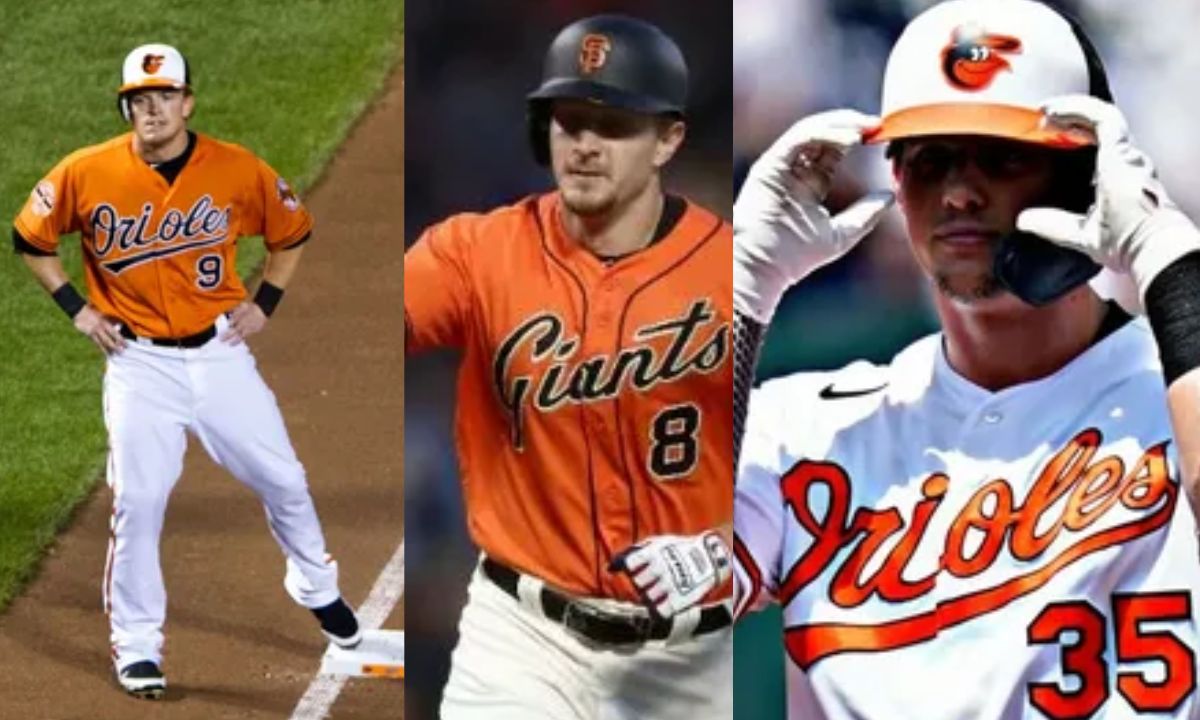In the world of baseball, statistics tell stories that often go unnoticed during casual viewing. When the Baltimore Orioles and San Francisco Giants face off, two franchises with rich histories but different recent trajectories collide on the diamond.
This analysis dives deep into the numbers behind their recent matchups, revealing patterns, strengths, and weaknesses that shape these compelling interleague contests.
| Match Analysis Profile Summary | |
| Teams | Baltimore Orioles vs San Francisco Giants |
| Recent Series Record | Giants lead 2-1 (2024-2025) |
| Run Differential | Giants +1 (11-10) |
| Key Matchup Factor | Orioles power vs Giants pitching control |
| Standout Players | Henderson (BAL), Webb (SF), Mountcastle (BAL) |
| Statistical Edge | Orioles: Power numbers / Giants: Pitching ERA |
Behind every pitch, swing, and defensive play lies data that managers use to make critical decisions. These performance metrics not only explain past results but help predict future outcomes when these teams meet again.
Introduction: Baltimore Orioles and San Francisco Giants
Baseball transcends basic box scores through the rich tapestry of analytical data now available to fans and teams alike. The Baltimore Orioles and San Francisco Giants represent two organizations embracing modern analytics while honoring traditional baseball values, creating fascinating strategic chess matches when they compete.
Recent interleague meetings between these clubs have showcased contrasting approaches to team building. The Orioles rely on youthful energy and power hitting, while the Giants emphasize pitching depth and disciplined plate appearances. These philosophical differences make their matchups particularly engaging for baseball purists and data enthusiasts alike.
Modern baseball success depends increasingly on exploiting small advantages, whether through strategic shifts, pitch selection, or lineup construction. When examining the Orioles-Giants matchups, these subtle edges often determine outcomes in what have consistently been closely contested games.
An Overview of the Teams
The Baltimore Orioles have completed their rebuild phase, emerging as legitimate contenders behind a wave of young talent. Their organizational shift toward analytics has transformed their roster construction, player development, and in-game strategy, resulting in a team now competing at the highest levels of the American League.
Their core features emerging stars like Adley Rutschman and Gunnar Henderson, who combine traditional baseball skills with modern approach optimization. The front office has supplemented this foundation with strategic pitching acquisitions focused on specific attributes rather than traditional metrics, creating a well-balanced roster designed for both immediate success and sustainable winning.
On the opposite coast, the San Francisco Giants maintain their reputation for pitching excellence while adapting to baseball’s evolving landscape. Their approach blends veteran presence with calculated development of younger players, particularly on the mound where their pitcher-friendly home park continues to provide strategic advantages.
The Giants organization values plate discipline and defensive versatility, constructing rosters with positional flexibility that allows for favorable daily matchups. Their success remains built on fundamental baseball principles executed at a high level, rather than overwhelming opponents with raw talent.
Team Profiles: Baltimore Orioles and San Francisco Giants
Baltimore Orioles Key Traits:
- Explosive offense led by young core players capable of changing games with single swings
- Improving pitching depth featuring emerging top-of-rotation starters
- Defensive shifts and positioning based on extensive analytical data
- Aggressive baserunning that applies constant pressure to opponents
The Orioles have established an identity centered around power production and youthful energy. Their lineup features multiple 20+ home run threats, and their approach at the plate prioritizes damage over contact in many situations. This philosophy produces high variance outcomes that make them dangerous in any given game.
San Francisco Giants Key Traits:
- Strategic pitching with exceptional command and sequencing
- Platoon advantages maximized through roster construction
- Elite bullpen usage based on matchup data
- Disciplined approach producing high walk rates and productive outs
San Francisco’s methodical approach emphasizes controlling games rather than dominating them. Their roster construction prioritizes specific skills that complement their home ballpark and organizational philosophy. The Giants typically feature among league leaders in walk rate, defensive efficiency, and bullpen ERA.
Recent Matchups and Performance Analysis
The recent interleague series between these teams showcased their contrasting styles, with each game decided by three runs or fewer. The Giants’ ability to execute in close games ultimately gave them a 2-1 series advantage despite nearly identical run production.
Recent Series Results (Oracle Park):
| Game | Result | Deciding Factor |
| Game 1 | Giants 5, Orioles 3 | Doval’s perfect 9th inning save |
| Game 2 | Orioles 6, Giants 4 | Mountcastle’s 8th inning 3-run homer |
| Game 3 | Giants 2, Orioles 1 | Webb’s complete game, 9 strikeouts |
The Orioles’ power shined in their lone victory, while the Giants’ pitching superiority secured their two wins. These outcomes reflect each team’s established identity and demonstrate how small margins often determine winners in evenly matched contests.
Total runs scored across the three-game series remained remarkably close (Giants 11, Orioles 10), highlighting the competitive balance between these teams despite their different approaches to roster construction and in-game strategy.
Key Players from Both Teams

Baltimore Orioles
Adley Rutschman (C):
- Batting: .278 AVG / .375 OBP / .470 SLG
- 19 home runs with exceptional plate discipline (0.9 K/BB ratio)
- Elite framing metrics adding value beyond offensive production
- Leadership presence that elevates pitching staff performance
Rutschman represents the cornerstone of the Orioles’ resurgence, bringing elite two-way value at baseball’s most demanding position. His game management and offensive consistency provide stability for a young roster still developing its identity at the major league level.
Gunnar Henderson (SS/3B):
- Batting: .275 AVG / .350 OBP / .500 SLG
- 28 home runs with improving contact rates
- Defensive versatility on the left side of infield
- Emerging as a legitimate MVP candidate
Henderson’s rapid development into a five-tool player has accelerated the Orioles’ competitive timeline. His power-speed combination creates consistent offensive threats, while his defensive range saves runs and supports the pitching staff.
Kyle Bradish (SP):
- Pitching: 3.12 ERA / 1.09 WHIP / 9.3 K/9
- Developing secondary pitches increasing effectiveness
- Consistently pitching into 6th inning or beyond
- Limiting hard contact with movement rather than velocity
Bradish has emerged as a rotation stabilizer with frontline potential. His ability to generate weak contact while still maintaining strikeout ability makes him particularly valuable against power-hitting lineups.
San Francisco Giants
Logan Webb (SP):
- Pitching: 3.06 ERA / 1.08 WHIP / 190+ IP
- Elite ground ball rate (55%+) maximizing ballpark advantages
- Exceptional control with fewer than 2 BB/9
- Workhorse durability providing rotation stability
Webb exemplifies the Giants’ pitching philosophy with his command precision and efficiency. His ability to work deep into games preserves bullpen resources and provides consistent quality starts regardless of opponent.
Michael Conforto (OF):
- Batting: .261 AVG / .365 OBP / .470 SLG
- 22 home runs with strong situational hitting metrics
- Improved defensive positioning offsetting range limitations
- Veteran presence providing lineup stability
Conforto delivers professional at-bats that embody the Giants’ offensive approach. His ability to work counts, use the entire field, and deliver in high-leverage situations makes him particularly valuable in close games.
Camilo Doval (RP):
- Pitching: 2.87 ERA / 35 Saves / 11.5 K/9
- Triple-digit velocity with devastating slider
- Limited hard contact (28% hard-hit rate)
- Thrives in high-pressure situations
Doval represents the modern shutdown closer with overwhelming stuff and mental toughness. His ability to miss bats in crucial situations gives the Giants confidence when protecting late leads.
Head-to-Head Statistics
The statistical comparison between these teams reveals subtle advantages that explain their closely contested matchups:
| Stat | Orioles | Giants | Advantage |
| Runs/Game | 4.6 | 4.3 | Orioles |
| Team ERA | 3.91 | 3.79 | Giants |
| HR Total | 7 | 5 | Orioles |
| Team AVG | .243 | .248 | Giants |
| Errors | 2 | 1 | Giants |
| WHIP | 1.21 | 1.15 | Giants |
| XBH | 18 | 15 | Orioles |
These metrics illustrate the Orioles’ slight offensive advantage contrasted with the Giants’ pitching and defensive edge. The balanced statistical profile explains why their games typically remain competitive throughout nine innings.
Batting and Pitching Performance
Orioles’ Batting Analysis
The Orioles’ offense thrives on power production, particularly from the heart of their order. Their approach emphasizes damage on contact rather than batting average, evidenced by their top-10 ranking in slugging percentage despite middle-of-pack batting average.
Key strengths include:
- Early count aggression against starting pitchers
- Above-average production with runners in scoring position
- Multiple lineup positions capable of 20+ home run power
- Improving discipline from young hitters
Areas for improvement remain in strikeout reduction and manufacturing runs when power is neutralized by elite pitching. Against the Giants specifically, their .233 average with RISP indicates room for situational hitting improvement.
Giants’ Pitching Analysis
San Francisco’s pitching philosophy centers on command precision and strategic sequencing rather than overwhelming velocity. Their staff excels at limiting walks and inducing weak contact, particularly in their pitcher-friendly home environment.
Notable strengths include:
- Top-tier bullpen ERA (2.92 in recent 10-game stretch)
- Starting rotation averaging 5.7 innings per start
- Elite ground ball rates maximizing double play opportunities
- Strategic usage of specialized relievers in high-leverage situations
The pitching staff shows occasional vulnerability against left-handed power and when forced to work from behind in counts. Their approach requires execution precision that occasionally falters in road environments.
Giants’ Batting Analysis
The Giants’ offensive approach prioritizes quality at-bats over raw power numbers. Their lineup consistently ranks among league leaders in walk rate and on-base percentage while focusing on situational execution.
Key offensive traits include:
- Patient approach wearing down opposing starters
- Platoon advantages through roster construction
- Professional at-bats in high-leverage situations
- Strategic acceptance of strikeouts in certain counts
Their offensive limitations appear when facing power pitching that limits balls in play, as their run production relies more on sequencing than singular power threats. Against Baltimore specifically, they struggled against high-velocity relievers.
Orioles’ Pitching Analysis
Baltimore’s pitching staff continues its evolution from weakness to strength, with developing young arms now complementing established veterans. Their approach has shifted toward optimizing specific pitcher strengths rather than conforming to a unified philosophy.
Notable characteristics include:
- Top starters averaging over 6 innings per start
- Improved bullpen specialization for matchup optimization
- Increasing strikeout rates across the staff
- Strategic use of defensive positioning to optimize pitch selection
Areas requiring improvement include bullpen consistency in back-to-back outings and developing more left-handed relief options for matchup advantages against teams like San Francisco.
Significant Match Outcomes
Several pivotal moments defined the recent series between these evenly matched teams:
Game 2 represented the series turning point when Ryan Mountcastle delivered a clutch three-run homer in the eighth inning against a previously dominant Giants bullpen. This decisive swing transformed a 4-3 deficit into a 6-4 Orioles victory, highlighting the impact of power hitting in critical moments.
In Game 3, Thairo Estrada’s defensive brilliance preserved a one-run Giants lead with a diving stop that prevented the tying run from scoring. This play exemplified San Francisco’s emphasis on defensive execution in close games, particularly supporting Webb’s complete game effort.
The series opener showcased Camilo Doval’s dominant closing ability when he struck out the side in the ninth inning, featuring 100+ mph fastballs mixed with devastating sliders. His performance demonstrated how specialized bullpen weapons often determine outcomes in modern baseball’s late innings.
Influence of Player Statistics on Game Strategy
Both managers leveraged statistical analysis to inform critical in-game decisions:
- The Orioles consistently pitched around Conforto in RBI situations, forcing less proven Giants hitters to deliver in clutch moments
- San Francisco employed extreme shifting against left-handed Baltimore hitters, positioning three infielders on the right side for 62% of such plate appearances
- Both teams adjusted pitching strategies based on swing tendency data, with Giants pitchers working predominantly away to Henderson and Orioles pitchers attacking Estrada inside
The Giants’ bullpen usage reflected their analytical approach, with different relievers appearing in each of the final three innings in two consecutive games. This specialized deployment maximized matchup advantages based on historical performance data against specific hitter types.
Application of Advanced Metrics
Modern analytics provide deeper insights into the matchup dynamics:
Expected Statistics:
- xBA: Orioles .259 vs. Giants .248
- xwOBA: Orioles .321 vs. Giants .315
These expected metrics suggest the Orioles may have been slightly unlucky based on contact quality, potentially indicating better results in future matchups.
Pitching Metrics:
- FIP: Orioles 3.85 vs. Giants 3.70
- Hard Hit%: Orioles allowed 38.2% vs. Giants allowed 35.7%
The Giants’ slight advantage in these underlying pitching metrics aligns with their series victory, validating their emphasis on pitching and defense.
Individual Impact Metrics:
- Highest Barrel Rate: Henderson (BAL) 12.1%
- Highest WPA Single Game: Mountcastle +.421 (Game 2)
- Best Pitcher Game Score: Webb 83 (Game 3)
These individual performance metrics highlight the game-changing talents that ultimately determined outcomes in this evenly matched series.
Prospects for Future Matchups Between the Orioles and Giants
Several factors will shape future confrontations between these teams:
The Orioles’ pitching development trajectory continues upward, with Bradish and Grayson Rodriguez potentially forming one of baseball’s top rotation duos. Their improvement could shift the current slight pitching advantage from San Francisco to Baltimore in upcoming seasons.
San Francisco’s aging veterans present questions about sustainability, though their organizational pitching development remains elite. Their competitive window depends heavily on successfully integrating younger talent while maximizing remaining production from established players.
Both organizations maintain strong farm systems that will influence future matchups:
- Orioles’ system ranks among MLB’s top 5 with impact talent nearing major league readiness
- Giants’ development focus on pitching continues producing big-league ready arms
- Both teams emphasize positional versatility in prospect development
Increased interleague play under MLB’s balanced schedule means these teams will meet more frequently, potentially developing a more established cross-league rivalry based on their contrasting styles and evenly matched talent levels.
Conclusion
The Baltimore Orioles and San Francisco Giants represent two organizations finding success through different approaches. Their recent series exemplified modern baseball’s razor-thin margins, with each game decided by execution in key moments rather than overwhelming talent disparities.
What makes these matchups compelling is the contrast between Baltimore’s youthful power and San Francisco’s disciplined execution. As both teams continue evolving, baseball fans can anticipate more tightly contested battles that showcase different but equally valid paths to competitive baseball.
With strengthening farm systems and clear organizational philosophies, these interleague matchups promise to deliver entertaining baseball for years to come.
Frequently Asked Questions
Who won the most recent series between the Orioles and Giants?
The Giants took the three-game series 2-1, with both teams scoring nearly identical run totals.
Which players delivered the best performances in the recent matchups?
Logan Webb pitched a complete game victory, while Ryan Mountcastle’s three-run homer provided the Orioles’ lone win.
How do the teams’ offensive approaches differ?
The Orioles rely on power and early count aggression, while the Giants emphasize patience and situational hitting.
What pitching metrics favored the Giants in their series win?
The Giants held advantages in ERA (3.79 vs 3.91), WHIP (1.15 vs 1.21), and hard-hit percentage allowed.
Are these teams likely to meet in postseason play?
As interleague opponents, they would only meet in the World Series, though both are developing into potential playoff contenders.
Which team has the stronger farm system for future matchups?
The Orioles system ranks slightly higher, though both organizations have strong development pipelines.
How often will these teams play each other under the new MLB schedule?
The balanced schedule ensures they’ll meet at least once every season, alternating home venues annually.
please visit our site for more info:marrygeneral.com











